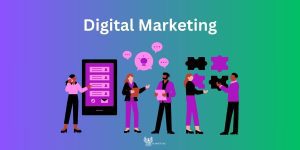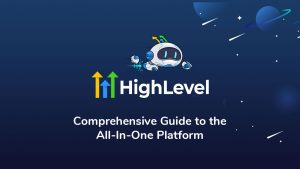When marketing for your business, your efforts must generate sales which will then equal revenue. One of the numerous ways of doing that is by understanding the stages in lifecycle marketing. However, what is lifecycle marketing? What are the stages? And how can marketers, salespeople, and business owners implement this essential strategy into their routines? Let’s get a closer look and go through of what it entails.
What is Lifecycle Marketing
Brands use lifecycle marketing to help satisfy customers throughout their buyer journey. This approach involves studying the customer journey from initial contact to building a lasting relationship. Marketers can do that by tailoring messages based on potential customers’ current stage to meet their needs and move them to the next phase.
Examples of lifecycle marketing include:
- Social Media
- Content Driven Marketing (Blogs and Newsletters)
- Direct mail
- Affiliate Marketing
However, in no particular order, these are just examples. At its most basic level, lifecycle marketing is about providing customers with the most significant value at each stage of their relationship with the brand. The aim is to guide the customer towards making a purchase using strategic digital marketing techniques.
The Stages of Lifecycle Marketing
Marketers must address and understand each stage to successfully implement a lifecycle marketing strategy. Failing to research their customer’s journey can result in a failed campaign. Or worse, wasted resources and lost customers to competitors who executed their efforts correctly.
Awareness
In this lifecycle marketing stage, raising customer awareness is crucial for the success of your business. It is the first step in the process of acquiring and retaining customers, and it lays the foundation for all future interactions.
Below is how you can boost awareness in the lifecycle marketing stage:
- Content Marketing: Create high-quality, engaging content that appeals to your target audience. This can include blog posts, articles, videos, infographics, and more. By providing valuable information, you establish your brand as an authority and can attract potential customers.
- Social Media: Utilize social media platforms such as Facebook, Twitter, Instagram, and LinkedIn to reach your target audience. Share your content, engage with followers, and participate in relevant discussions to increase brand visibility and awareness.
- Email Marketing: Build an email list and send regular newsletters, updates, and promotional offers to subscribers. Personalize your emails to make them more appealing and relevant to the recipient.
- Search Engine Optimization (SEO): Optimize your business website and content for search engines to crawl and improve your organic search rankings. This will help drive more traffic to your site and increase brand awareness.
- Paid Advertising: Invest in paid advertising campaigns on platforms like Google Ads, Facebook Ads, and the popular ad strategy fastvertising. This can help you reach a larger audience and create more brand exposure.
Consideration
Congratulations you got a potential costumers aware of your product, what’s next? That would be the consideration stage, which is just as important as getting your product known. Because in this stage this is where you tell what your product is all about. And what better place to have the most important features and descriptions than your own site or store.
It’s important to provide prospects with helpful information about your product or service so they can make an informed decision. This could include providing detailed product descriptions, customer reviews, case studies, and other resources that demonstrate how your product or service can benefit them.
Additionally, you should focus on building relationships with prospects by engaging them through email campaigns or social media posts that provide valuable content. By taking the time to understand each customer’s individual needs and providing helpful resources during the consideration stage, you can ensure that customers have all the information they need to make an informed purchase decision.
Conversion
The conversion stage is when a potential customer has become the customer and decides to purchase a product or service based on their evaluation of their chosen brand. This stage is when all of your hard work pays off, and you get to see tangible results from your marketing efforts.
However, you still aren’t finished just because you have made a conversion through your marketing efforts. You are responsible for providing customers with enough information and incentives to make them confident in their purchase decision. Because we all know buyer’s remorse is real and returns sting.
To lessen the blow of spending money businesses can offer free shipping, or other rewards for completing their purchase helps create trust and comfort surrounding your product. Additionally, creating an easy-to-navigate checkout process is vital so that customers don’t become frustrated and abandon their carts before completing the transaction.
By optimizing your conversion stage, you can increase your sales and maximize ROI from your marketing efforts. To do this, you should focus on creating content that resonates with potential customers and encourages them to take action. Additionally, creating an easy-to-navigate checkout process is vital so that customers don’t become frustrated and abandon their carts before completing the transaction.
Retention
Retention is a key stage in the lifecycle marketing process. It keeps customers engaged and loyal to a brand or product over time. In other words it keeps them coming back. However, this can be done through various methods, such as providing incentives, offering discounts, providing personalized customer service, and creating loyalty programs. Retention strategies are designed to increase customer satisfaction and encourage repeat purchases. Businesses can maximize their profits and build long-term customer relationships by focusing on retention. In other words, reward those who keep you in business.
Advocacy
The advocacy stage in lifecycle marketing is the final stage of the customer journey. It’s when customers become loyal to a brand and actively promote it through word-of-mouth, reviews, referrals, and other social proof. At this stage, customers are more likely to make repeat purchases and become brand advocates who help fuel the earlier stages of the customer journey. To ensure customers reach this stage, marketers should focus on creating personalized experiences that meet their needs throughout each step of the customer journey.
Conclusion
In conclusion, lifecycle marketing is an essential strategy for any marketer looking to create a lasting impact on their target audience. By understanding and addressing the unique needs of customers at each stage of their journey, businesses can foster strong relationships, enhance customer satisfaction, and ultimately drive revenue growth. With the ever-increasing competition in the market, it is crucial for marketers to adopt a holistic approach, and lifecycle marketing offers just that.
In today’s world, consumers are constantly bombarded with information and promotional messages, making it crucial for businesses to stand out by offering value and building meaningful connections with their audience. To achieve this, mastering the approach of lifecycle marketing is essential for every marketer to stay ahead in the competitive landscape.
Frequently Asked Questions
Lifecycle marketing and CRM (Customer Relationship Management) are related concepts, but they are not the same thing. While both concepts aim to improve customer relationships and drive business growth, their focus and implementation differ.
Lifecycle Marketing is a strategic approach to marketing that focuses on guiding customers through different stages of their journey with your brand. It involves creating targeted and personalized marketing campaigns to engage with customers at each stage. Lifecycle marketing aims to build long-lasting relationships with customers, drive loyalty, and increase overall customer lifetime value.
On the other hand, CRM (Customer Relationship Management)is a system or software businesses use. It helps to manage and organize interactions with customers. CRM systems help companies to track customer information, communication history, sales opportunities, and other relevant data. The primary objective of CRM is to improve customer service, enhance customer satisfaction, and drive sales growth.
Regarding marketing, businesses often find themselves in one of two categories: B2B (business-to-business) or B2C (business-to-consumer). Understanding the differences between these two types of marketing is essential for any business looking to maximize its success.
B2B marketing focuses on building relationships and providing a return on investment, while B2C marketing is more concerned with quick solutions and enjoyable content. The customer lifecycle for B2B products or services is typically longer than that of B2C solutions, as they involve a more significant investment and robust features.
When it comes to strategies, B2B campaigns are usually focused on lead generation and use longer nurture sequences. On the other hand, B2C campaigns often involve short-term promotions and focus on conversions and quick wins. Consistency in messaging and customer interactions is vital for both approaches.
Lifecycle Marketing Score is a metric used to measure the effectiveness of a company’s marketing efforts. It is calculated by taking into account customer acquisition, customer retention, and customer lifetime value. It helps businesses understand how well their marketing strategies are performing and identify areas for improvement. The higher the score, the more successful a company’s marketing strategy is.







